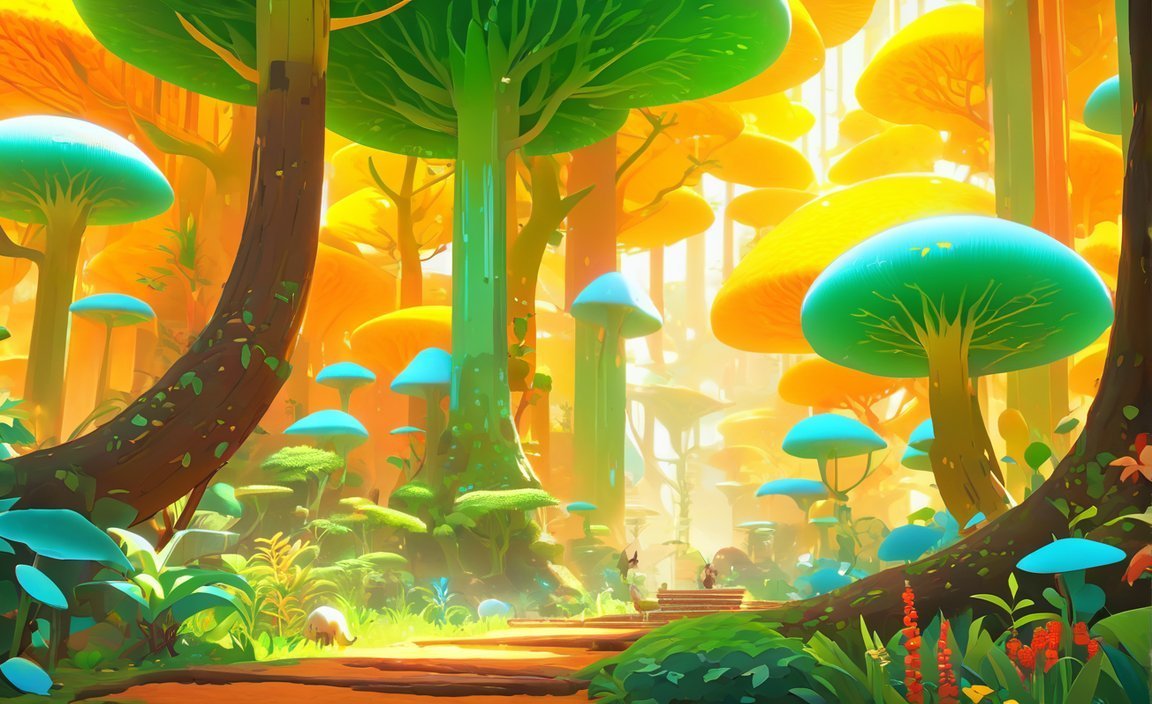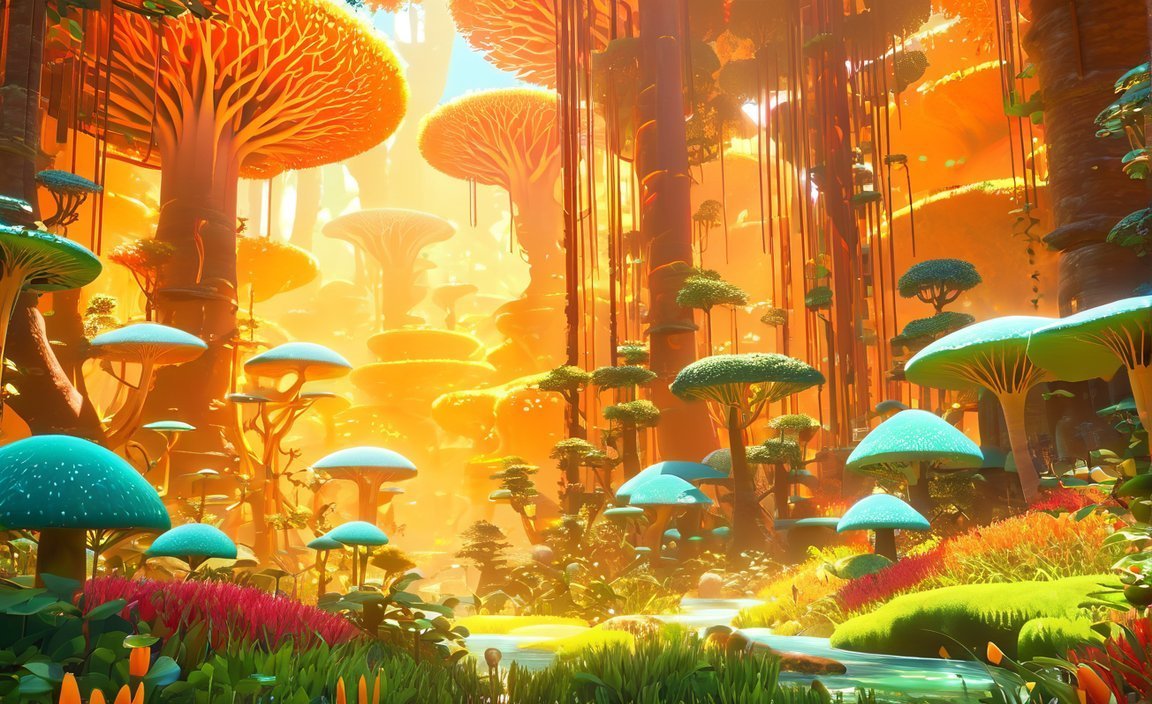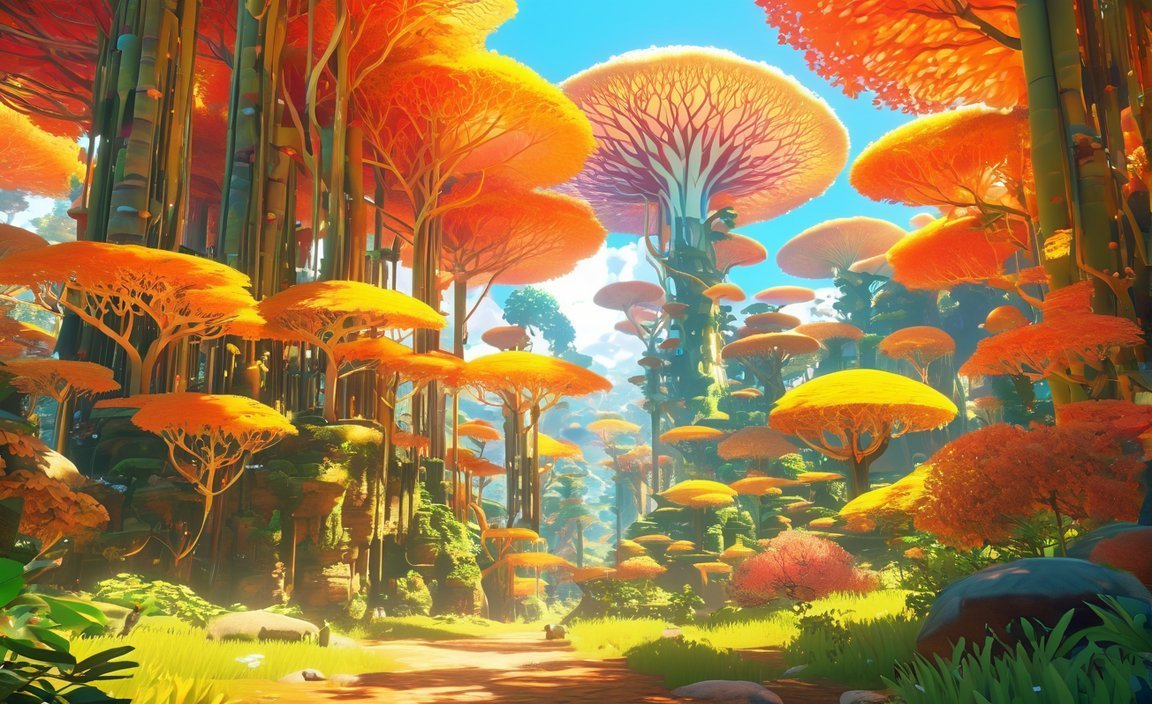Discovering the Extraordinary: 10 Fascinating Biome Facts

Biomes, those distinct ecological communities that span across the Earth, hold an awe-inspiring power as they shape our planet’s diverse landscapes. From the lush rainforests teeming with unparalleled biodiversity to the vast expanses of deserts with their unique adaptions, each biome tells a captivating story of life’s ingenious resilience. In this article, we delve into the enchanting world of biomes, uncovering ten fascinating facts that highlight the delicate balance between nature and human impact and underscore the urgent need for conservation efforts to preserve these extraordinary ecosystems.
Key Takeaways:
Grasslands, like the savanna, are mainly covered with grasses and have few trees. They make up a significant portion of the Earth’s land area.
The savanna biome covers half of Africa and is home to a diverse range of animals, including elephants, lions, and giraffes.
Despite their harsh conditions, desert biomes harbor unique animals that have adapted to survive in arid environments, such as camels, scorpions, and snakes.
Shrublands, such as the chaparral, are characterized by low-lying vegetation and are found in regions with Mediterranean-like climates.
The tundra biome is home to large herds of reindeer and other unique species like polar bears and Arctic foxes. These animals have adapted to extreme cold temperatures and limited food availability.
The taiga, or boreal forest, is the largest land biome on Earth and consists mostly of coniferous forests. It is vital for the survival of endangered species such as the Siberian tiger and Amur leopard.
Temperate forests, known for their moderate climates, house a wide range of plant and animal species, with trees competing for sunlight.
Rainforests are renowned for their incredible biodiversity, with unique creatures like wrestling frogs that exhibit fascinating behavior to establish dominance.
Biomes play a crucial role in maintaining the balance of our planet’s ecosystems by providing habitat for diverse species and important services such as carbon sequestration and water regulation.
Understanding and protecting these diverse ecosystems is essential for the conservation of our planet’s biodiversity and the integrity of our planet’s ecosystems.
10 Interesting Facts About Biomes
Biomes are incredible ecosystems that cover our planet, each with its own unique climate, vegetation, and wildlife. Let’s dive into these fascinating worlds and uncover 10 captivating facts about different biomes.
1. Grasslands: Vast Expanses of Grass
Did you know that grasslands cover a significant portion of the Earth’s land area? These expansive biomes are aptly named, as they are dominated by grasses and have few trees. They provide vital habitats for a diverse range of animals, including grazing species like zebras and bison. Some notable grasslands include the iconic savannas of Africa and the prairies of North America.
2. Savanna: Africa’s Extensive Grassland
Half of Africa is covered by the savanna biome, making it one of the most extensive biomes on the continent. This vast grassland teems with diverse wildlife, including majestic elephants, fierce lions, and graceful giraffes. The savanna is a captivating landscape that showcases the intricate balance between herbivores, predators, and the ever-changing seasons.
3. Desert: Surprising Biodiversity in Arid Conditions
Though deserts may seem harsh, they are home to some incredible animals that have adapted to the arid conditions. Camels, with their humps storing water, scorpions equipped with venomous stingers, and elusive desert snakes are just a few examples. These resilient creatures navigate the extreme temperatures and scarce water resources, showcasing their remarkable abilities to survive.
4. Shrublands: A Unique Blend of Vegetation
Shrublands, such as the chaparral, exhibit a distinct feature of moderate vegetation height, lying between tall forests and low-lying grasslands. Found in regions with Mediterranean-like climates, these biomes offer a rich tapestry of diverse plant species. They play a crucial role in providing habitat for various birds, small mammals, and reptiles.
5. Tundra: An Arctic Wonderland
In the tundra biome, you might encounter colossal herds of reindeer, which have adapted to the extreme cold temperatures and limited food availability. These magnificent creatures navigate the frozen landscape, alongside other unique wildlife like polar bears and Arctic foxes. The tundra, characterized by frozen soil and a short growing season, showcases the resilience of life in the harshest environments.
6. Taiga: The Boreal Forest
The taiga, also known as the boreal forest, is the largest land biome on Earth. Stretching across vast areas of North America, Europe, and Asia, this expansive forest is primarily composed of coniferous trees like pine and spruce. The taiga harbors precious ecosystems and is home to many endangered species, such as the Siberian tiger and the Amur leopard.
7. Temperate Forests: Nature’s Symphony of Trees
In temperate forests, trees stretch towards the sun, vying for light in their pursuit of growth. These forests, characterized by their moderate climate, boast a magnificent array of plant and animal species. From towering oak trees to delicate wildflowers and from squirrels to songbirds, temperate forests exemplify the interconnectedness of nature’s web.
8. Rainforests: Biodiversity Hotspots
Rainforests are renowned for their unparalleled biodiversity. Within these lush biomes, you might stumble upon extraordinary creatures like wrestling frogs, engaging in fascinating behaviors to establish dominance. The abundance of life in rainforests highlights the intricate connections between species and emphasizes the need for their preservation.
Biomes are not just fascinating landscapes; they are integral to maintaining the balance of our planet’s ecosystems. With their vital services, such as carbon sequestration and water regulation, these diverse habitats are essential for the conservation of global biodiversity.
Sources:
[^1]: Mama Teaches. “Fun Facts About Biomes.” Mama Teaches, mamateaches.com/fun-facts-about-biomes/.
[^2]: Fact File. “10 Facts about Biomes.” Fact File, factfile.org/10-facts-about-biomes.]
Here are 10 interesting facts about various topics that will leave you fascinated!
10 interesting facts about condensation: Did you know that condensation is not just limited to your windows? Discover more intriguing facts about condensation here.
10 interesting facts about marine biology: Dive into the world of marine biology and explore captivating facts that will make you appreciate the wonders of the ocean even more.
10 interesting facts about marine life: Delve into the depths of the sea and uncover awe-inspiring facts about the diverse and remarkable marine life that inhabits our oceans.
10 interesting facts about Parliament House: Step inside the magnificent Parliament House and discover captivating insights into this iconic symbol of democracy.
10 interesting facts about Parliament House Canberra: Get to know the fascinating history and intriguing facts surrounding Parliament House in Canberra, the political heart of Australia.
10 interesting facts about ponds: Ponds are not just peaceful bodies of water – they are home to a myriad of fascinating creatures! Explore intriguing facts about ponds that will leave you amazed.
10 interesting facts about savanna biome: Embark on a virtual adventure to the magnificent savanna biome and uncover astonishing facts about this unique ecosystem.
10 interesting facts about sea creatures: Delve into the depths of the ocean and discover astonishing facts about the captivating and mysterious sea creatures that inhabit it.
10 interesting facts about sea life: Dive into the enchanting world of sea life and uncover captivating facts that will leave you mesmerized by the vast beauty of our oceans.
10 interesting facts about taiga biome: Venture into the breathtaking taiga biome and explore fascinating facts about this cold, but vibrant, ecosystem.
So what are you waiting for? Click on the links above and embark on a captivating journey to discover these intriguing facts today!
Rainforests are the most biodiverse biomes
Size and Location
- Tropical rainforests cover less than two percent of the Earth’s total surface area^1^.
- These biomes are primarily located near the equator, with major rainforests found in regions such as the Amazon, Congo, and Southeast Asia^1^.
Biodiversity
- Rainforests are the most biodiverse biomes on Earth, housing an incredible variety of plant and animal species^1^.
- The Amazon and Congo rainforests are particularly known for their high levels of biodiversity^1^.
Medicine
- Tropical rainforests have provided us with many important chemicals that are used in the treatment and cure of various medical conditions^1^.
- The plants and organisms found in rainforests have contributed to the development of medications for diseases such as cancer, malaria, and arthritis^1^.
Thermostat of the Earth
- Rainforests act as the world’s thermostat by regulating temperatures and weather patterns^1^.
- They help in absorbing carbon dioxide and releasing oxygen, playing a crucial role in mitigating climate change^1^.
Threats and Conservation
- Tropical rainforests face numerous threats, including deforestation, logging, and habitat destruction^1^.
- Conservation efforts are crucial for preserving the biodiversity and ecosystem services provided by rainforests^1^.
Key Takeaways:
- Rainforests cover less than two percent of the Earth’s surface, but they are incredibly important ecosystems^1^.
- They are located near the equator, with major rainforests found in regions such as the Amazon, Congo, and Southeast Asia^1^.
- Rainforests are the most biodiverse biomes on Earth, with the highest levels of plant and animal species diversity^1^.
- These biomes have provided important medicinal compounds used in the treatment of various medical conditions^1^.
- Rainforests act as the world’s thermostat, regulating temperatures and weather patterns while playing a vital role in mitigating climate change^1^.
- Deforestation, logging, and habitat destruction are major threats to rainforests, highlighting the need for conservation efforts^1^.
Citations:
Conservation efforts are crucial for preserving biomes
Biomes are extraordinary ecosystems that offer unique insights into the wonders of nature and provide habitats for iconic wildlife. However, the delicate balance of these biomes is under constant threat from human activities. That’s why conservation efforts are crucial for preserving the integrity of biomes and protecting them for future generations.
Here are 10 fascinating facts that shed light on the importance of conservation in preserving biomes:
1. Biodiversity and Economic Opportunities
Conservation efforts not only protect the incredible biodiversity found within biomes but also recognize the economic opportunities they offer. Forests, minerals, and hydropower potential in biomes can contribute to economic growth. However, increased industrial footprint and exploitation can lead to severe implications and loss of biodiversity.
Source: National Geographic Society
2. Medicines and Undiscovered Species
Forests are home to the most diverse biotic communities in the world, harboring potential medicines and undiscovered species. By preserving these ecosystems, we protect invaluable resources for medical research and gain a deeper understanding of our planet’s biodiversity.
Source: University of California Museum of Paleontology
3. Protecting Plants, Animals, and Humans
Conservation and preservation of biomes are essential for the well-being of not only plants and animals but also humans. Biomes play a crucial role in maintaining healthy ecosystems, providing clean air and water, regulating climate, and supporting livelihoods. By protecting these biomes, we ensure a sustainable future for all.
4. Rainforests: The Biodiversity Hotspots
Rainforests hold the highest concentration of plant and animal species on Earth and contribute significantly to cancer research. With less than 2 percent of the Earth’s surface covered by rainforests, they are biodiverse treasure troves that demand urgent conservation efforts.
5. Arctic Tundra: The Carbon Storehouse
Contrary to popular belief, deserts are not always hot. In fact, one-third of the Earth’s stored carbon is found in Arctic tundra soil. Preserving the fragile tundra biome is crucial in mitigating climate change and maintaining carbon balance.
6. Taiga: The Northern Marvel
The taiga, or boreal forest, is the largest land biome on Earth, primarily composed of coniferous trees. Its immense size and unique ecological features make it vital to conservation efforts. By protecting the taiga, we ensure the preservation of countless plant and animal species.
7. Conservation as the Practice of Caring
Conservation is the practice of caring for Earth’s natural resources for the benefit of all living things. It involves sustainable practices, protecting biodiversity, and mitigating the negative impacts of human activities. By focusing on conservation, we can strive towards a harmonious coexistence with our planet’s biomes.
8. Forests: Biodiversity and Climate Change
Forests are not just a collection of trees; they are intricate ecosystems that support a remarkable variety of life. Conservation efforts aimed at protecting forests play a crucial role in mitigating biodiversity loss and climate change. Forests act as carbon sinks, absorbing carbon dioxide and helping regulate our planet’s climate.
9. Achieving Conservation Goals
Conservation efforts require the collaboration of governments, organizations, and individuals. By setting and striving to meet conservation goals, such as protecting a certain percentage of each nation’s land area, we ensure the proactive preservation of biomes and the vital services they provide.
10. Protecting Carbon and Biodiversity Hotspots
Top-ranked land areas, when conserved, can protect a significant amount of global carbon and biodiversity. Strategic conservation planning and efforts focused on these hotspots are effective in safeguarding our planet’s natural resources and fostering a sustainable future.
Key Takeaways:
- Conservation efforts are crucial for preserving the delicate balance of Earth’s diverse biomes.
- Biomes offer unique insights into the wonders of nature and provide habitat for iconic wildlife.
- Conservation and sustainable practices are vital in preserving the integrity of biomes and protecting them.
- Forests, minerals, and hydropower potential in biomes are recognized as economic opportunities, leading to increased industrial footprint.
- The exploitation of biomes, such as forests and aquatic ecosystems, can have severe implications and lead to loss of biodiversity.
- Forests are home to the most diverse biotic communities in the world and contain potential medicines and undiscovered species.
- Conservation and preservation of biomes are essential for the well-being of plants, animals, and humans.
- Rainforests hold the highest concentration of plant and animal species, and they contribute to cancer research.
- Deserts are not always hot, and one-third of Earth’s stored carbon is found in Arctic tundra soil.
- Taigas are the largest land biome, located in the northern hemisphere.
- Conservation is the practice of caring for Earth’s natural resources for the benefit of all living things.
- Protecting forests is crucial in mitigating biodiversity loss and climate change.
- Conservation efforts focus on protecting biodiversity and carbon storage in boreal forests.
- Top-ranked land areas, when conserved, can protect a significant amount of global carbon and biodiversity.
- Governments and organizations strive to meet conservation goals, such as protecting 17% of each nation’s land area.
Source 1: National Geographic Society
Source 2: University of California Museum of Paleontology

FAQ
Q1: What are biomes and how are they defined?
A1: Biomes are distinct ecological communities characterized by their unique climate, vegetation, and wildlife. They cover a significant portion of the Earth, and their boundaries are typically determined by factors such as temperature, precipitation, and geography.
Q2: Which biome is the most biodiverse?
A2: Rainforests are the most biodiverse biomes on Earth. They house an incredible variety of plant and animal species, making them hotspots for biodiversity conservation.
Q3: Why are conservation efforts crucial for preserving biomes?
A3: Conservation efforts are crucial for preserving biomes because they protect the delicate balance of Earth’s diverse ecosystems. By preserving the biodiversity and ecosystem services provided by biomes, we can ensure the survival of unique plant and animal species and maintain the integrity of these extraordinary habitats.
Q4: What are some threats faced by biomes, particularly rainforests?
A4: Biomes, especially rainforests, face numerous threats such as deforestation, logging, habitat destruction, and climate change. These activities pose significant risks to the biodiversity and ecosystem stability of biomes, highlighting the urgent need for conservation and sustainable practices.
Q5: What can we learn from studying biomes?
A5: Studying biomes allows us to gain insights into the wonders of nature and understand the interconnectedness of species and ecosystems. By exploring biomes, we can uncover the remarkable adaptations and relationships between organisms, appreciate the importance of conserving biodiversity, and learn how our actions impact these extraordinary ecosystems.















